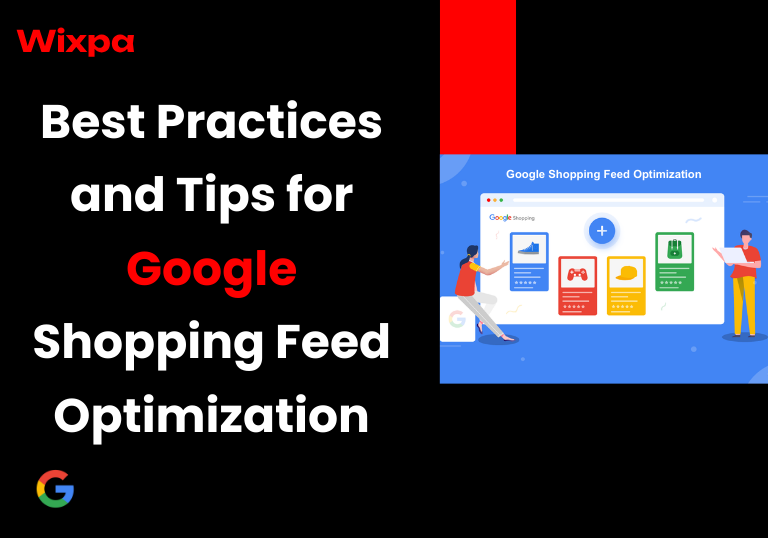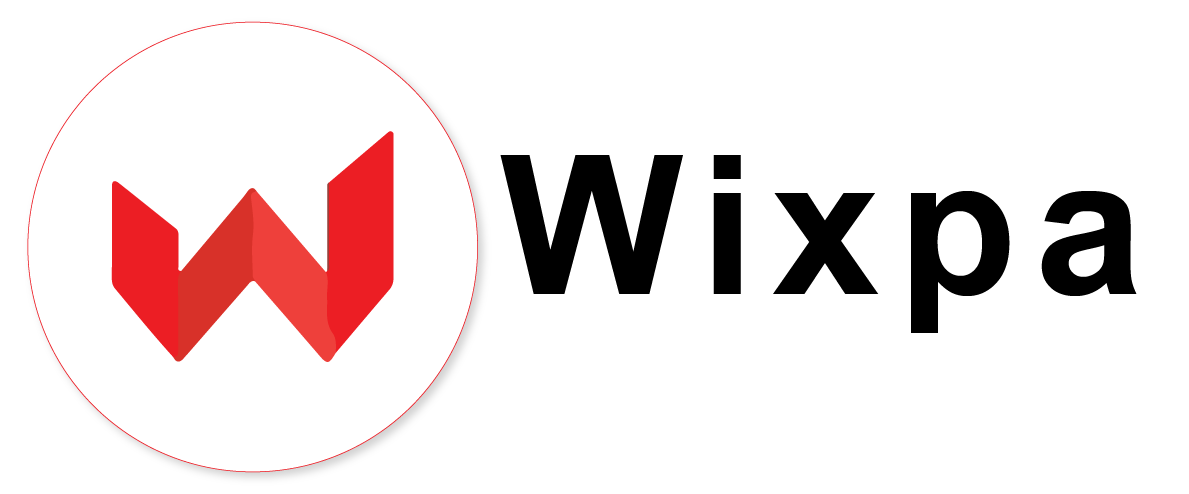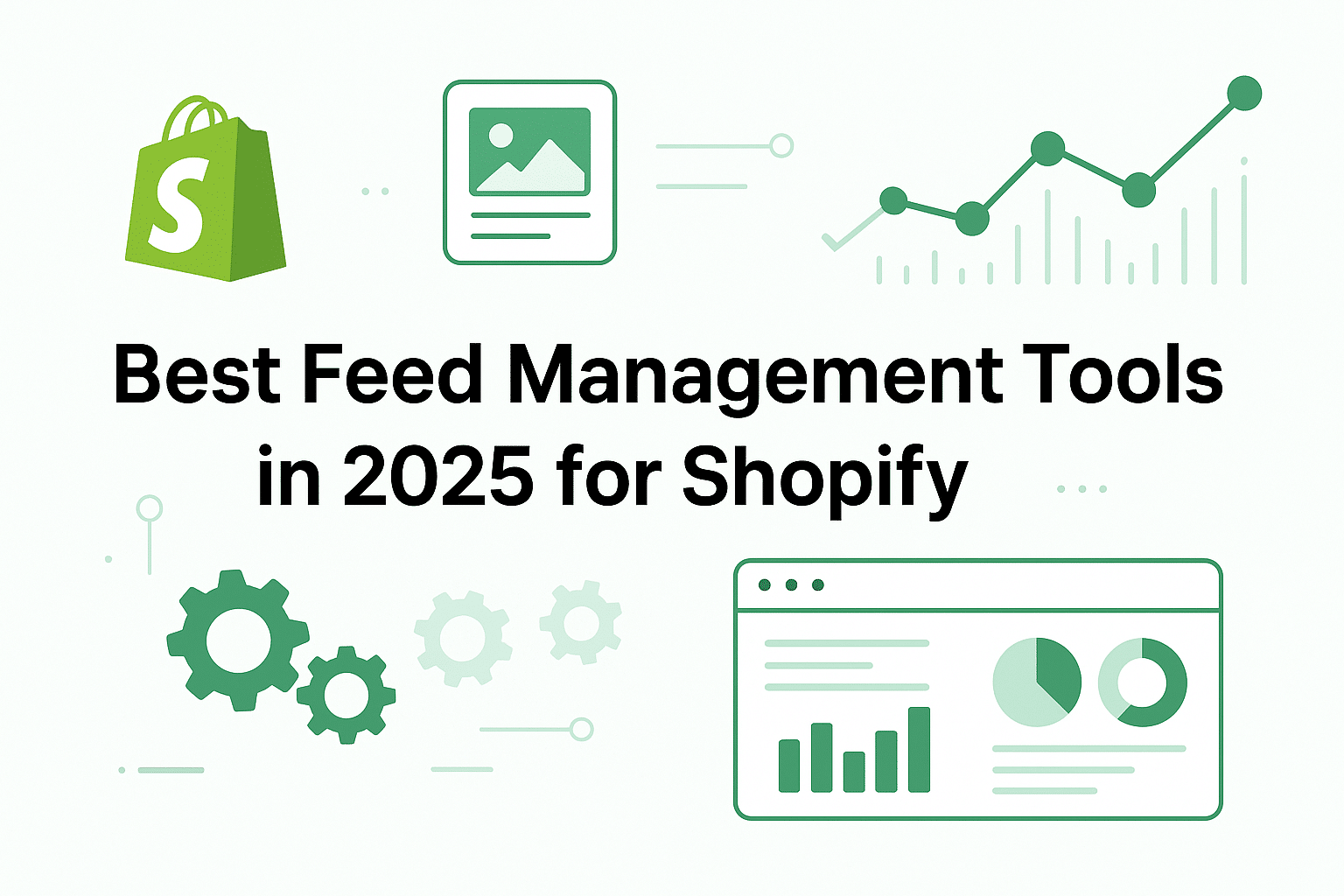
Optimize your Google Shopping Feed for improved visibility and conversions. Discover best practices and strategies to enhance your product listings today!
Have you ever wondered how retailers show their products on Google? This is because of Google Shopping. It allows businesses to display their products in search listings and ads.
To get started, retailers create a product feed in Google Merchant Center and optimize it specifically for Google Shopping. Effective optimization can improve user experience and raise exposure.
However, if the feed isn’t optimized correctly, it could display inaccurate data. It may also miss the intended audience or leave out important details, preventing your efforts from reaching their full potential.
Feed optimization plays a key role in the success of Google Shopping campaigns. To help you succeed, this blog covers the best practices and tips for optimizing your shopping data feed. By following these tips, you can turn average listings into efficient ones. These improved listings will increase sales and deliver better results. Now, let’s get into the product feed optimation in detail.
Introduction to Google Shopping Feed:
Capturing public attention is becoming more challenging with the proliferation of ads and distractions. E-commerce users face tough competition as businesses fight for visibility. One useful tool that stands out is Google Shopping Feed. This feature helps retailers increase their online presence and makes it easy for their target audience to find the products they need directly in search results.
Imagine your products appearing first when customers search for them. That’s what an optimized shopping feed can do! Whether you run a full e-commerce site or manage a virtual inventory, mastering this tool can boost your reach. It can also increase your sales significantly.
Why Optimize Your Shopping Feed?
Just like you optimize product pages on your website, your shopping feed needs attention too. The goal is to increase clicks and conversions from potential buyers.
A well-optimized data feed provides search engines like Google with more valuable information. This helps your listings stand out and become more relevant to what shoppers are searching for, increasing the possibility that your ads will show up more frequently.
Optimizing your data feed fuels your entire online marketing strategy. It’s the foundation that supports everything. Ignoring feed quality puts you at a disadvantage. Competitors who fine-tune their feeds will outshine you.
By investing time and resources in feed optimization, you gain a competitive edge. A refined data feed connects your products with buyers. This bridge ensures your products appear in front of shoppers who are actively searching for them.
Think about the impact: better relevance means Google shows your ads more often. You’ll see higher visibility, more clicks, and lower ad costs.
Benefits of Shopping Feed Optimization:
An optimized feed ensures your products are noticed. It helps you attract more customers and achieve better results for your ad spend. Search engines recognize the value in your listings and reward you with higher visibility.
So, don’t overlook the power of feed optimization and invest in improving your product data feed. It may offer the edge over competitors that your business requires. You’ll bring in more customers and offer an exceptional shopping experience.
Take action today. With the right feed strategies, you can outperform your competition and grow your online success!
Best Practices and Tips for Google Shopping Feed Optimization:
Using GTINs for Products:
GTIN stands for Global Trade Item Number. It has become a significant part of the optimization process, and Google prioritizes products that include a GTIN.
GTINs help give each product a code that makes it easy to recognize and ensures that no two things are the same. Although they are no longer a necessary feature, they are still worth spending time and effort.
What Role Do GTINs Play in Optimization?
GTINs can provide several benefits for your products. Here’s how:
- Improved Product Visibility
GTINs improve your product’s visibility to potential buyers. Search engines use these unique codes to find products when someone searches using related keywords. This makes your products show up in search results more often.
- Accurate Product Information
GTINs carry all the essential product details. This makes it easier to manage inventory, locate products quickly, and ensure smooth deliveries to customers.
- Higher Priority in Search Results
Google’s algorithm gives more importance to products with GTINs. This means products without GTINs may rank lower in search results, reducing their chances of being seen.
- Better Conversion Rates
Products with GTINs are more likely to attract buyers. Using GTINs, you can optimize your products for better search rankings and increased sales opportunities.
Optimizing Product Titles:
Product titles play a key role in the success of your Google listings. Google’s algorithm relies heavily on product titles to match search queries. If your titles don’t include the right keywords, your products won’t appear in relevant searches. This means you’ll miss valuable opportunities to attract buyers and drive sales.
To improve visibility, always choose keywords that your target audience is actively searching for. Optimized titles help your listings reach the right people. This increases your chances of getting clicks and boosting conversions. Missing important keywords can limit your reach and hurt your business potential. Don’t let that happen—act now and give your listings the visibility they deserve!
Product titles aren’t just for Google’s algorithm. They’re for buyers, too. A well-written title helps buyers quickly decide if your product matches their needs.
Include relevant keywords so your products appear in the right search results. Also, avoid complicated language or technical terms that could confuse buyers.
Consider adding the brand and material of your products to the title. Buyers connect with familiar brands and want details like composition or materials. This makes it easier for them to trust your listing and click through.
By combining keyword optimization with clarity, you can attract shoppers and increase visibility and conversions.
Tips for Writing Effective Product Titles:
- Your titles should be descriptive and easy to understand.
- Focus on using high-value keywords with strong search volume. Target low-competition keywords as well. You can rank higher and gain authority more quickly with this strategy.
- Avoid using promotional words in your titles. Instead, add promotional details through other product attributes.
- Include only the main product details. Mention key features like model, size, type, or color, but avoid adding too many details.
Using Color Attributes:
Please make an effort with colors to attract customers who have a clear idea of the product they want. If they have a specific product vision or a particular color in mind, you can meet their expectations. Providing accurate color options will help you stand out and ensure customer satisfaction. In some countries, providing the correct color attribute is even mandatory for Apparel and accessories.
In the past, it was common to simplify colors in Google Shopping feeds. Sellers often replaced unique color names with something more searchable. For example, if a product color was “Pomegranate,” it might have been changed to “light red” or simply “red.”
You may have followed this practice, but it’s no longer acceptable. Google crawls your landing page’s microdata to verify product details. If the color listed in your feed doesn’t match what’s on your landing page, it’s marked as a mismatch. To avoid this, stop flattening colors and use their actual names.
Include primary and secondary colors. You can add up to one primary color and two secondary colors. Moreover, you can combine material with color. If your product is made of materials like gold or silver, merge the material and color attributes, e.g., a gold ring. This gives buyers a clear understanding of the product.
Using Optimized Product Description:
Writing a good product description is vital for effectively displaying your product. It clearly and engagingly provides essential details about the product. A well-optimized description ensures customers quickly understand what your product offers and why it’s valuable.
Product descriptions significantly influence buying decisions. They help customers connect with your brand, increase trust, and boost engagement.
Essential Elements of a Strong Product Description:
- Use Relevant Keywords:
Include keywords that match what customers search for online. As a result, your store’s website will rank better and generate more leads and sales.
- Focus on Unique Features:
Highlight what makes your product stand out. Explain the unique qualities that differentiate it from competitors. Make it clear to customers why your product is the superior option.
- Use Descriptive Language:
Use clear and descriptive words to help buyers visualize the product. Make them imagine using it through your words.
- Organize data in Bullet Points:
List key features and specifications in bullet points. This format is easy to read and works well on mobile devices. Short and strong points help customers quickly grasp the product’s main benefits.
Choosing the Right Image for Product Ads:
Product images are the first thing users notice when they see your ad. This makes it essential to choose images that look professional and appealing.
Tips for Optimizing the Product Images:
Below are some key tips to help optimize your product images effectively:
- Use High-Quality Images
Always upload high-resolution images. Clear, sharp visuals ensure your products are displayed accurately without misleading details or flaws.
- Add Alt Text for SEO
To make your product listing more SEO-friendly, include alt texts. Alt texts help Google’s crawlers properly index your product, increasing its visibility in search results.
- Maintain Visual Consistency
Ensure all product images across your inventory look uniform. Consistency in style, background, and quality helps strengthen your brand’s visual identity.
Optimizing Product Categories:
Using product categories is essential for organizing your products effectively in the feed. It helps place your products into clear and specific groups, making them easier for shoppers to find when searching on Google.
When products are categorized accurately, they appear in the right search results. This improves visibility and helps align your listings with Google Shopping taxonomy, increasing the chances of reaching potential buyers.
How to Categorize Products:
- Be Specific with Product Types:
Use the most detailed product type values available. For example, include the Google product category attribute [google_product_category], spanning at least 2-3 levels of hierarchy.
- Structure Your Categories Properly:
Start with a broad product category and narrow it to a specific subcategory.
- Avoid Unnecessary Content:
Do not include synonyms, promotional content, or unrelated search terms. The focus should remain on product type categorization.
Tips for Optimizing Product Categories:
- Understand Search Intent:
Consider what shoppers seek and align categories with their search behavior.
- Focus on Product Traits:
Use categories that reflect the specific features and nature of your products.
- Leverage Data and Insights:
Analyze historical data, user behavior, and category trends. These insights can help you identify e-commerce trends and refine your strategy for better performance.
Using Custom Labels:
Custom labels in Google Shopping help you maintain your product feed. They allow you to categorize your products based on specific business goals, which can help you create audience segments, rank high-value items, and improve your strategies.
Tips for Using Custom Labels Effectively:
- Group products based on seasonality, sales performance, profit margins, or attributes.
- Create custom labels for promotions like clearance sales or special offers.
- Use them for audience segmentation, remarketing, and personalized ads.
Using RegEx in Google Shopping Feed:
There are often many product data entries in a shopping feed. These entries can include product names, prices, descriptions, and much more. Regular Expressions is a powerful tool for cleaning up and organizing this data. To establish a search pattern, it helps you in matching character sequences, including variables, letters, and numbers.
For example, if your product titles include extra marketing terms like “Best Offer,” RegEx can help you find these titles and remove them in bulk.
Using Google Shopping Promotions:
Adding promotions, like discounts, to your Google Shopping ads can encourage faster buying decisions. Promotions show discounts and delivery information within your ads, giving buyers quick details.
You can use promotions to present offers directly on Google. Some attention-grabbing promotions include:
- 20% off
- Free Shipping
- Special offer
- Buy One, Get One
Important Points to Note While Creating Promotions:
- Make sure you have a Google Shopping Ads and Merchant Center account. You’ll need these to participate in the Promotions program.
- Complete the promotions form to get started.
- Follow the ‘participation criteria and policies.’ These guidelines ensure that your promotions are secure for customers. Note that promotions are available only in select countries.
- Plan when you want your promotions to appear in your product listings. Decide how often you want them displayed.
Why You Shouldn’t Skip Feed Optimization:
Neglecting the feed optimization can lead to several problems:
- Your listings may not rank for important search terms.
- You might pay more to display your ads.
- Competitors will take up more ad space, leaving you behind.
You need to include fields like size, brand, or variation to expand your reach. Without these details, you can’t bid on important factors that buyers care about.
Google Shopping Feed Optimization for Shopify Sellers:
As a Shopify seller, optimizing your product feeds is essential. It plays a significant role in the success of your shopping campaigns. Without proper optimization, your campaigns may not reach their full potential.
Many sellers face these challenges when managing their shopping feeds:
- Ensuring the accuracy and consistency of their data across the feeds.
- Handling product disapprovals, causing delays and frustration.
- Figuring out the complexities of shipping and tax configuration.
- Addressing the technical issues of developing metafields and managing product variations.
- Encountering listing errors or using low-performing keywords.
- Struggling with keyword bidding issues that affect campaign results.
- Facing issues when selling products internationally.
These issues can significantly hinder the functionality of your Shopify store. However, you can overcome these challenges with the help of feed management apps. These apps help improve optimization efforts and streamline the process.
One such app is our Wixpa Google Shopping Feed. It is a feed management app designed specifically for Shopify sellers. It can simplify the entire feed management process, making your Google Shopping journey smoother than ever!





